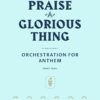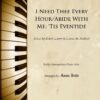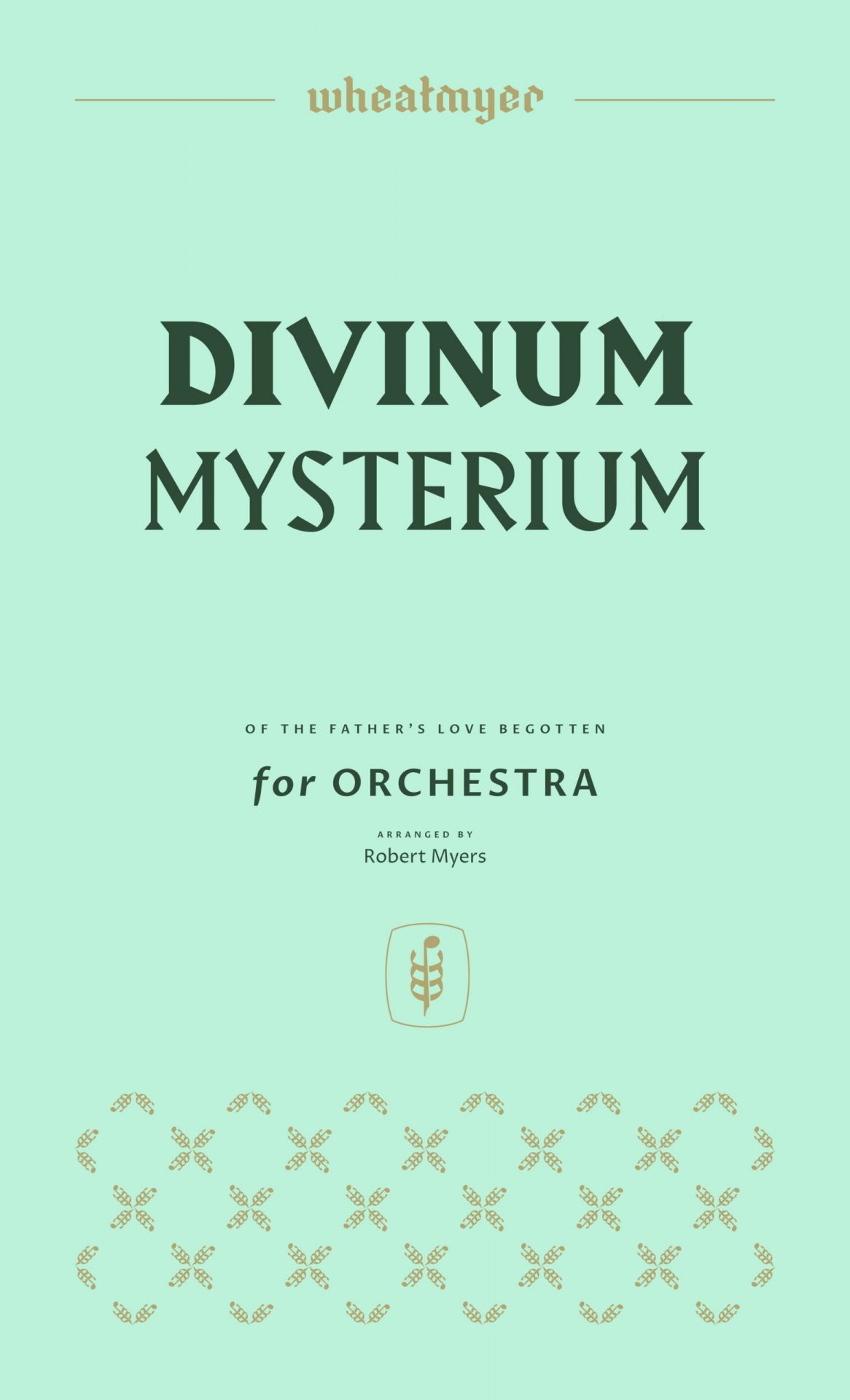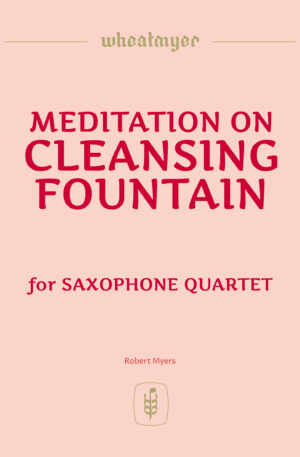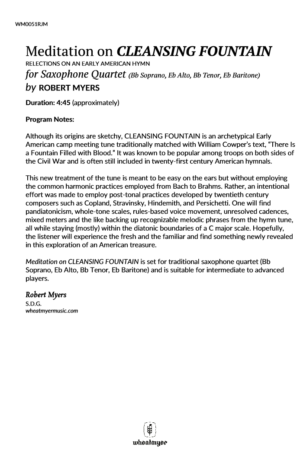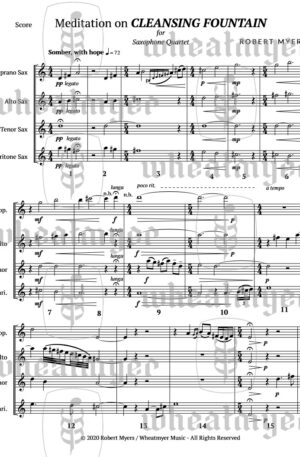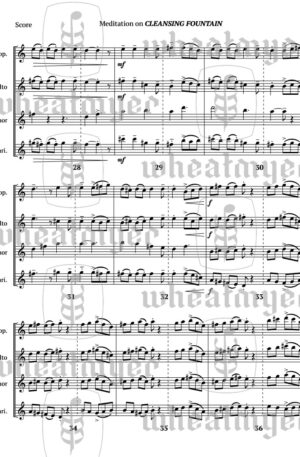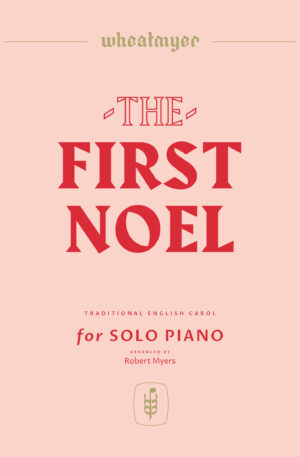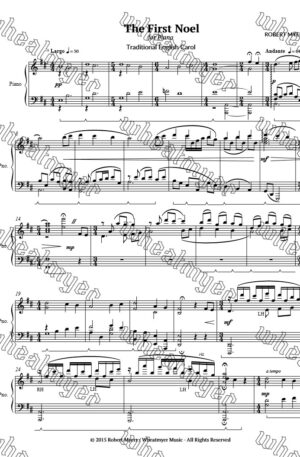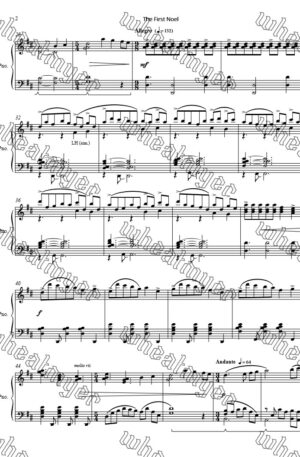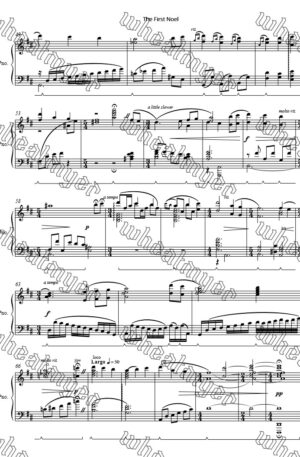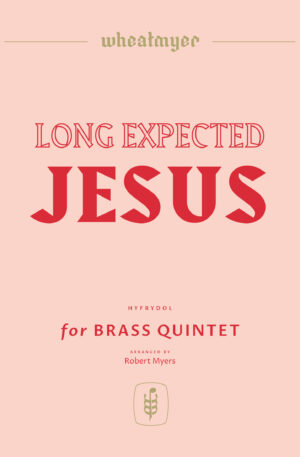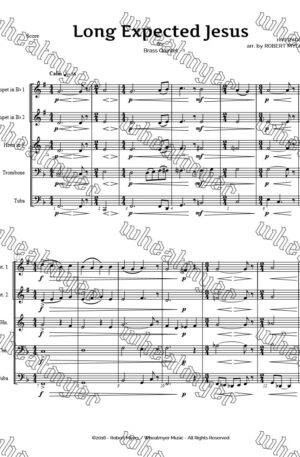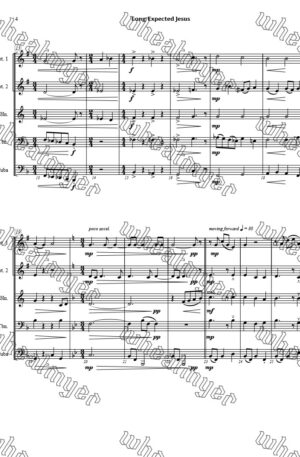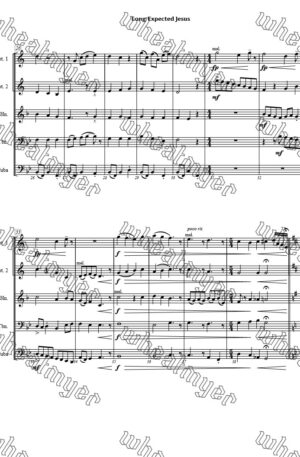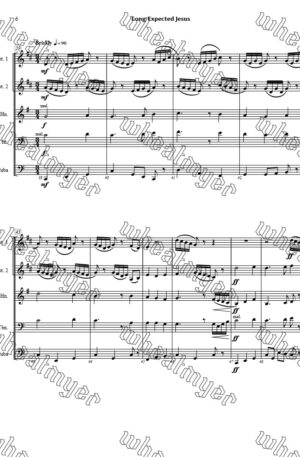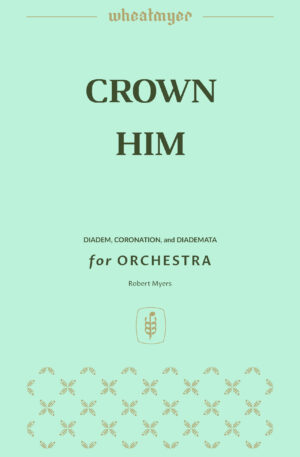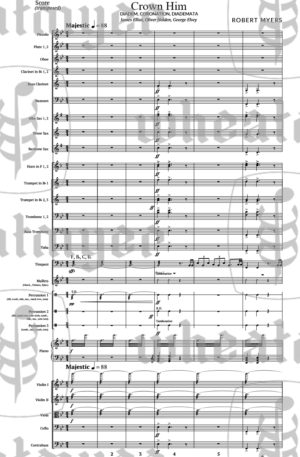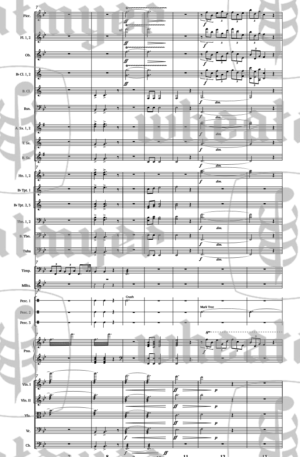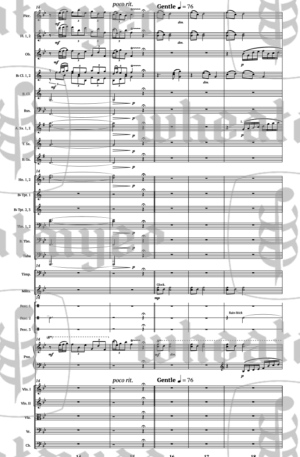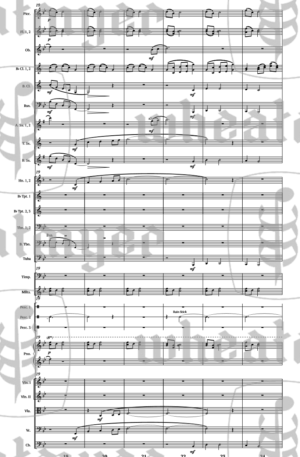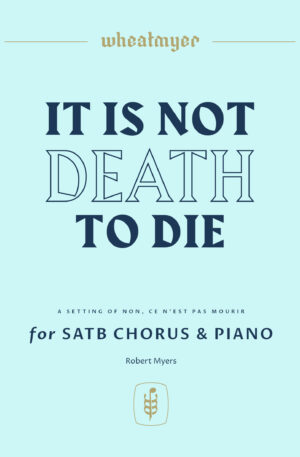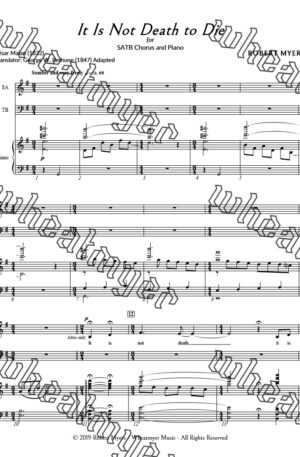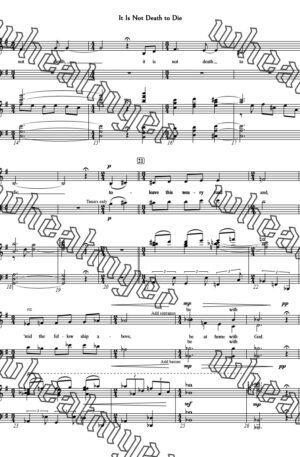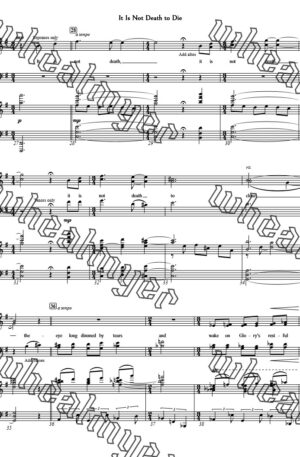Description
Divinum Myesterium
a melding of O Sacred Head Now Wounded and O Holy Night
for
Orchestra
Divinum Mysterium is named for a Medeival chant behind one the very oldest hymns still is use, written around the 12th Century and known to English speaking folk as “Of the Father’s Love Begotten.” But this piece is actually a melding of that ancient tune with a French carol seven centuries younger, Cantique de Noel, written by Adolphe Adam widely known as “O, Holy Night.” In Divinum Mysterium both tunes wax and wane in a musical dance that sounds so familiar, yet intimately new, and beautifully conveys the transcendant mystery of the incarnation of Christ.
While researching the ancient chant I was struck by one writer’s focus on the “strong wave shapes” of the tune so I have attempted to make swells and ebbs, with sporadic crashes, a significant feature of the piece. This shows up most clearly in the constant crescendo/decrescendo lines, but also in the weaving of phrases. Also, just as the waves at the beach don’t arrive in a steady rhythm, these patterns are variable – sometimes close together, other times farther apart, and sometimes overlapping.
The three major sections each have their own atmosphere, which I’ve implied in their headings: with Mystery and Wonder, Joyfully – a Child Is Born, Contemplative – God Is with Us.
The opening section portrays the mystery of the trinity (the text was written as an apology of the Nicene Creed) and wonder at the creator of the universe packaged as an infant, lying in a feeding trough. As the tune is derived from medieval chant, I wanted this section to reflect the loose metrical nature of that genre. Thus the melodic phrasing predominates at first over any sense of meter. The initial tonal and metrical ambiguity and fractured melodic lines gradually meld into conventional tonality and recognizable statements of the two main themes. Tension builds in anticipation of the middle Presto section
In the middle section we finally hear the complete main theme. I felt an upbeat, rhythmic treatment would be effective following the ambiguity of the opening. This reflects the dawning joy that the Messiah has come! However, the gravity of the text demands avoidance of frivolity and banality. Thus, I used a combination of the long, flowing lines of the tune with the syncopation of the 3+3+2+2 pulse and crisp rhythmic patterns in the accompaniment to produce what I hope is a fresh but still reverent treatment of this ancient hymn. With the arrival of the melody’s B section, the focus shifts restlessly among the orchestral families to produce a kaleidoscopic turning of tonal color.
Arriving at the closing section, the 1/8 note remains steady initially, but the pulse changes from an asymmetrical 4 into a straight 3 pattern. The slower pulse, decreasing tempo, and return of the secondary theme reflect an opportunity to contemplate the import that God in now among us in the flesh. As the ending approaches the energy and tempo fades, at first imperceptibly then progressing into a deliberate and graceful close, as if a master helmsman were docking his ship. In ending, a violin cadenza presents a burst of momentum; a trumpet solo reminisces over the earlier tempo; and the woodwinds savor one last phrase of “O Holy Night.”
S.D.G.
Robert Myers
Additional information
| Genre | Hymns |
|---|
General Enquiries
There are no enquiries yet.

